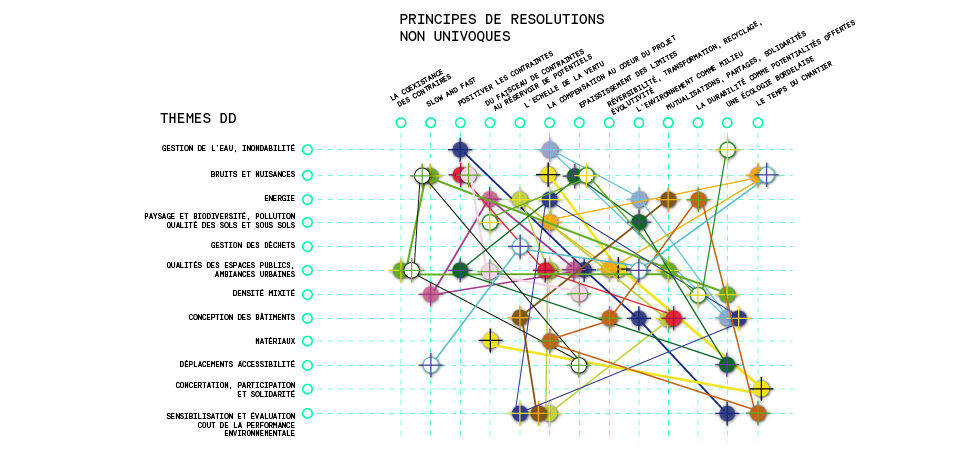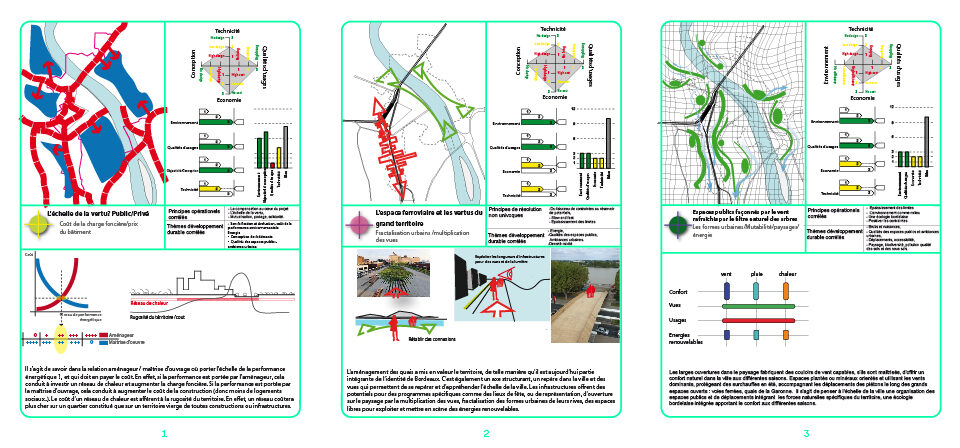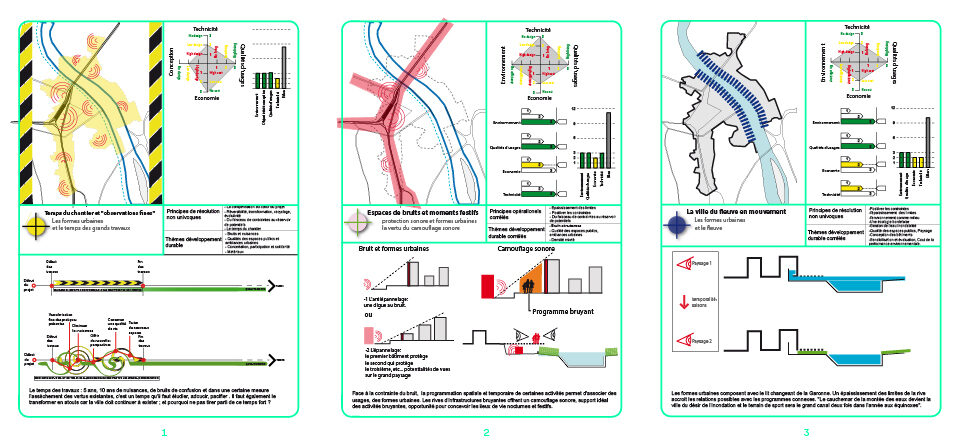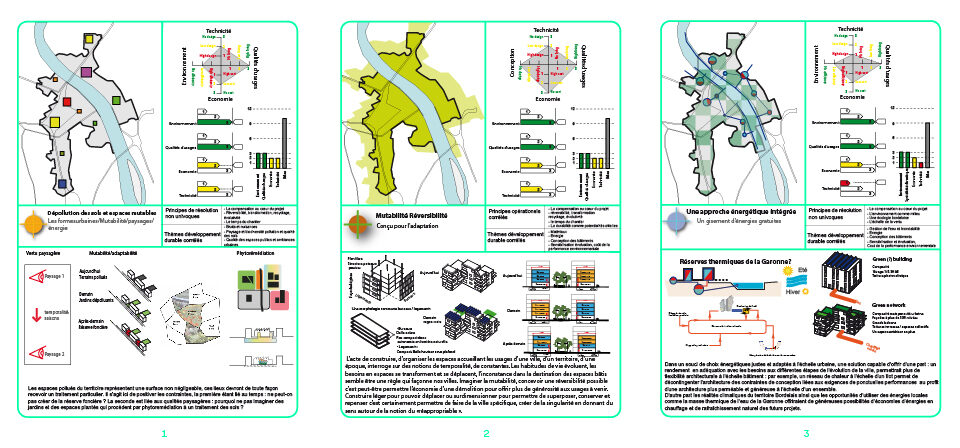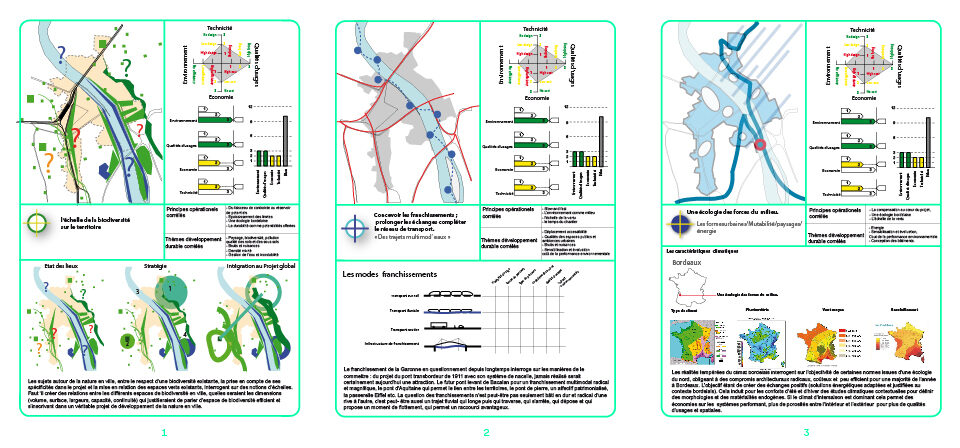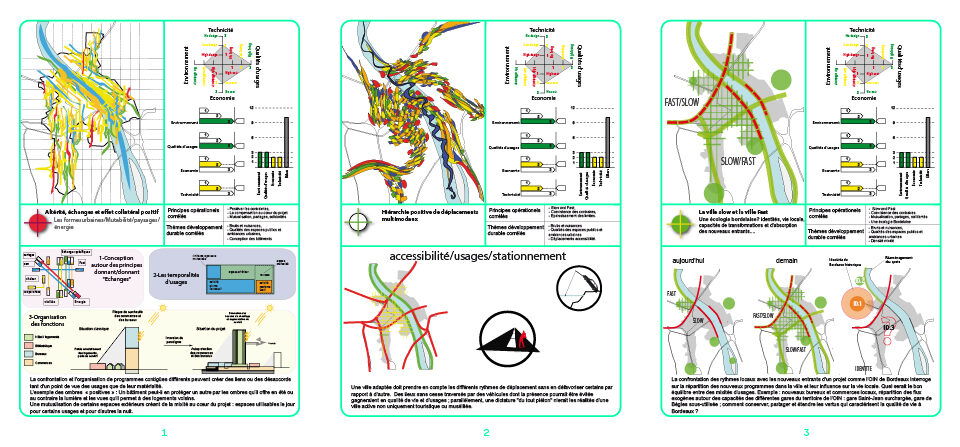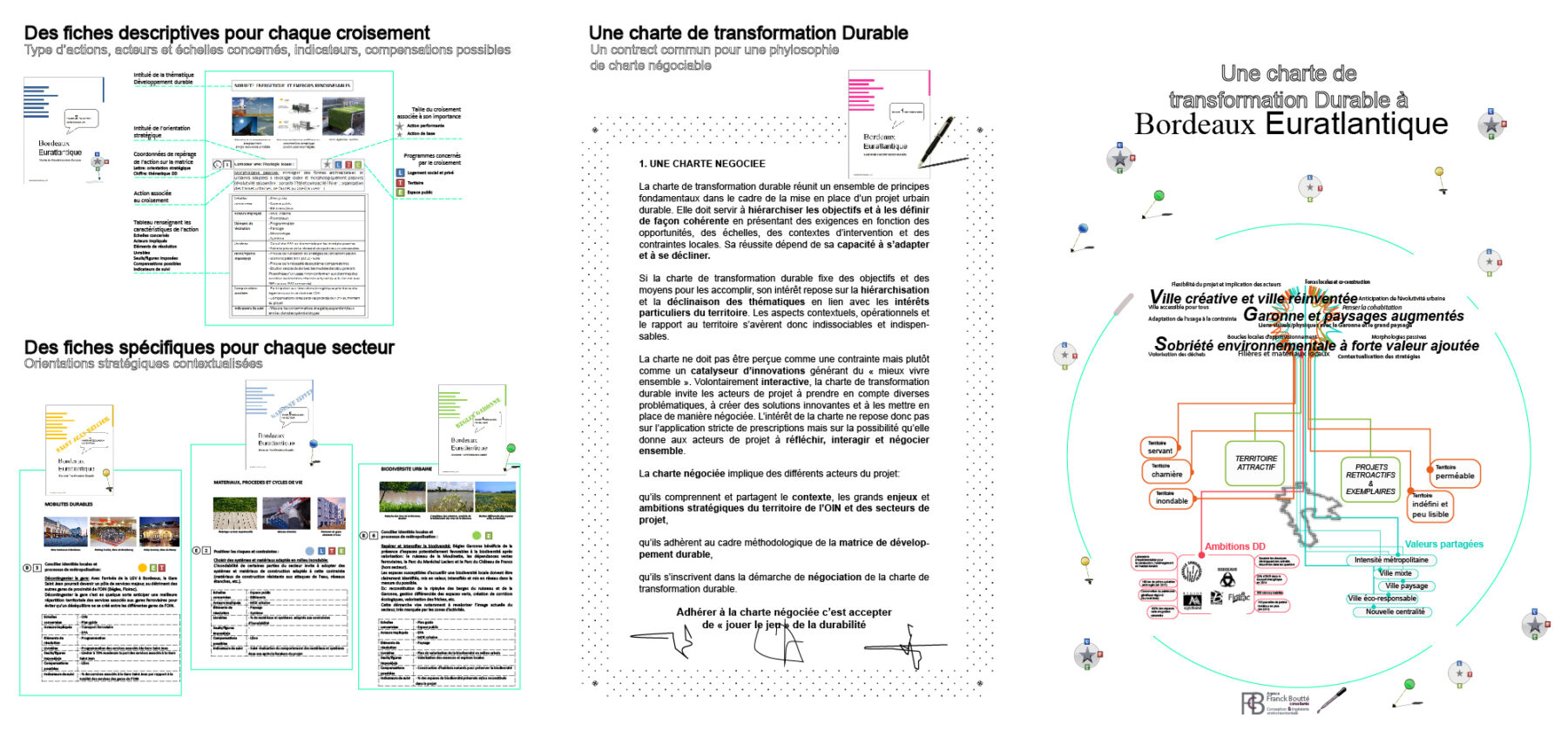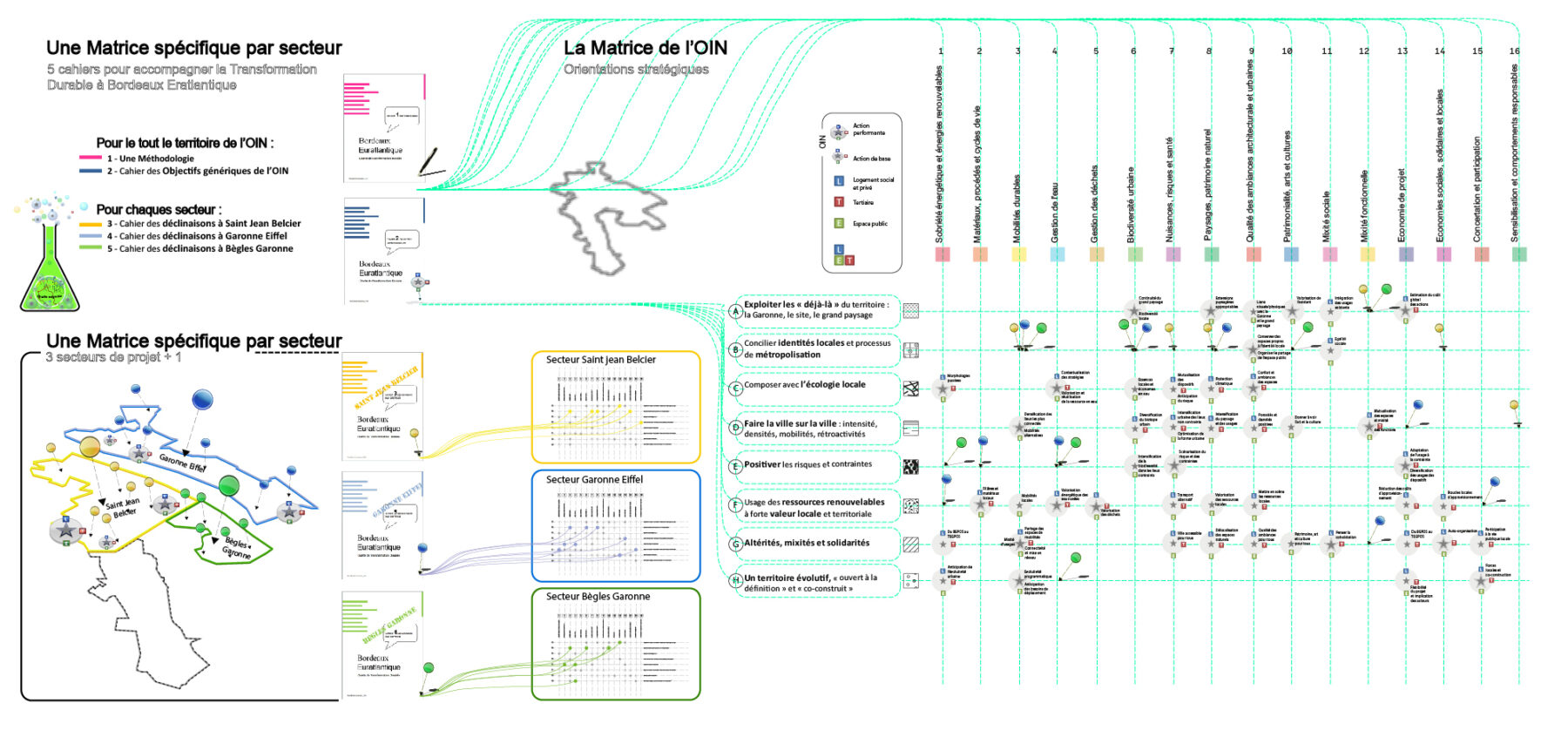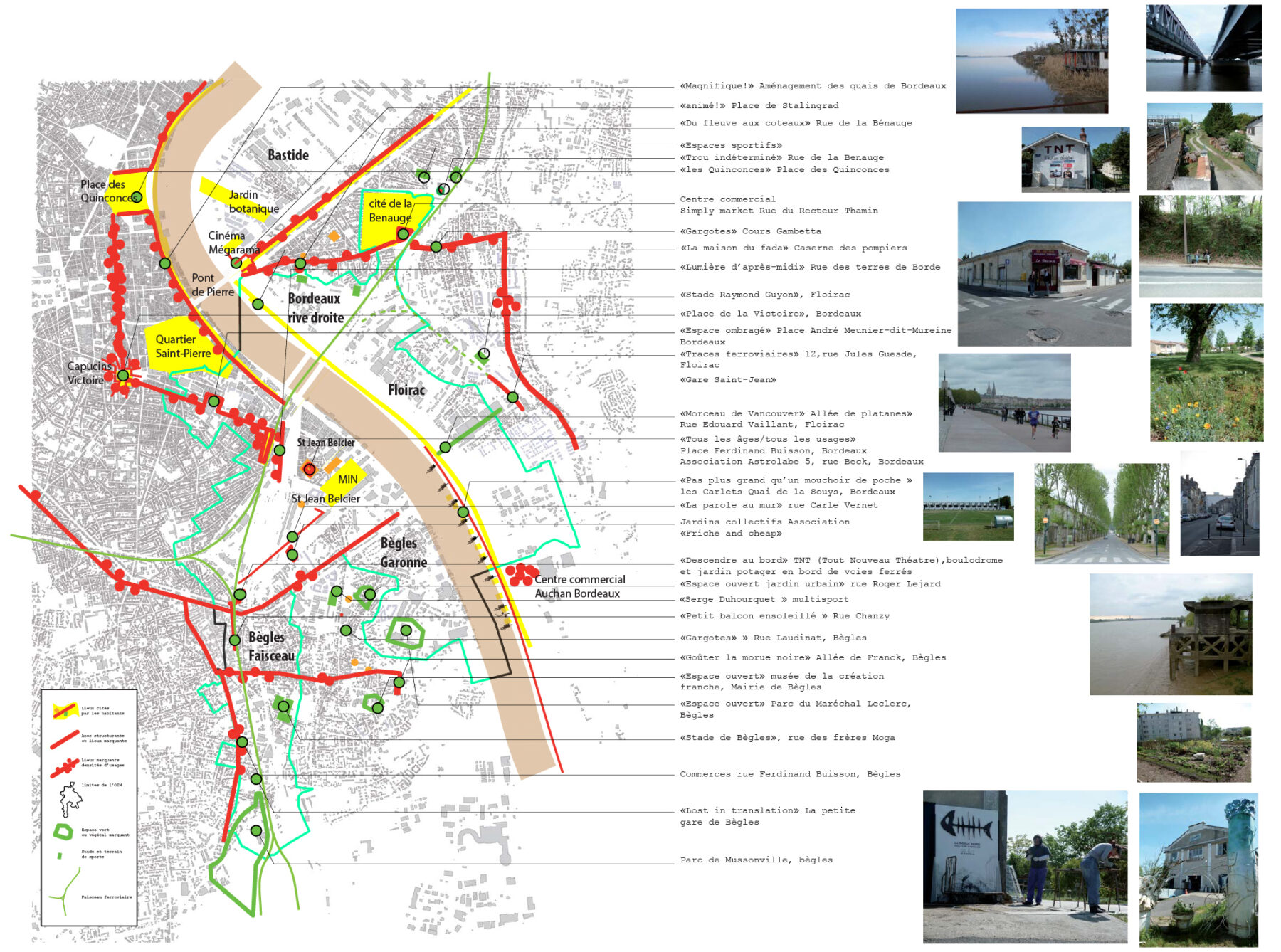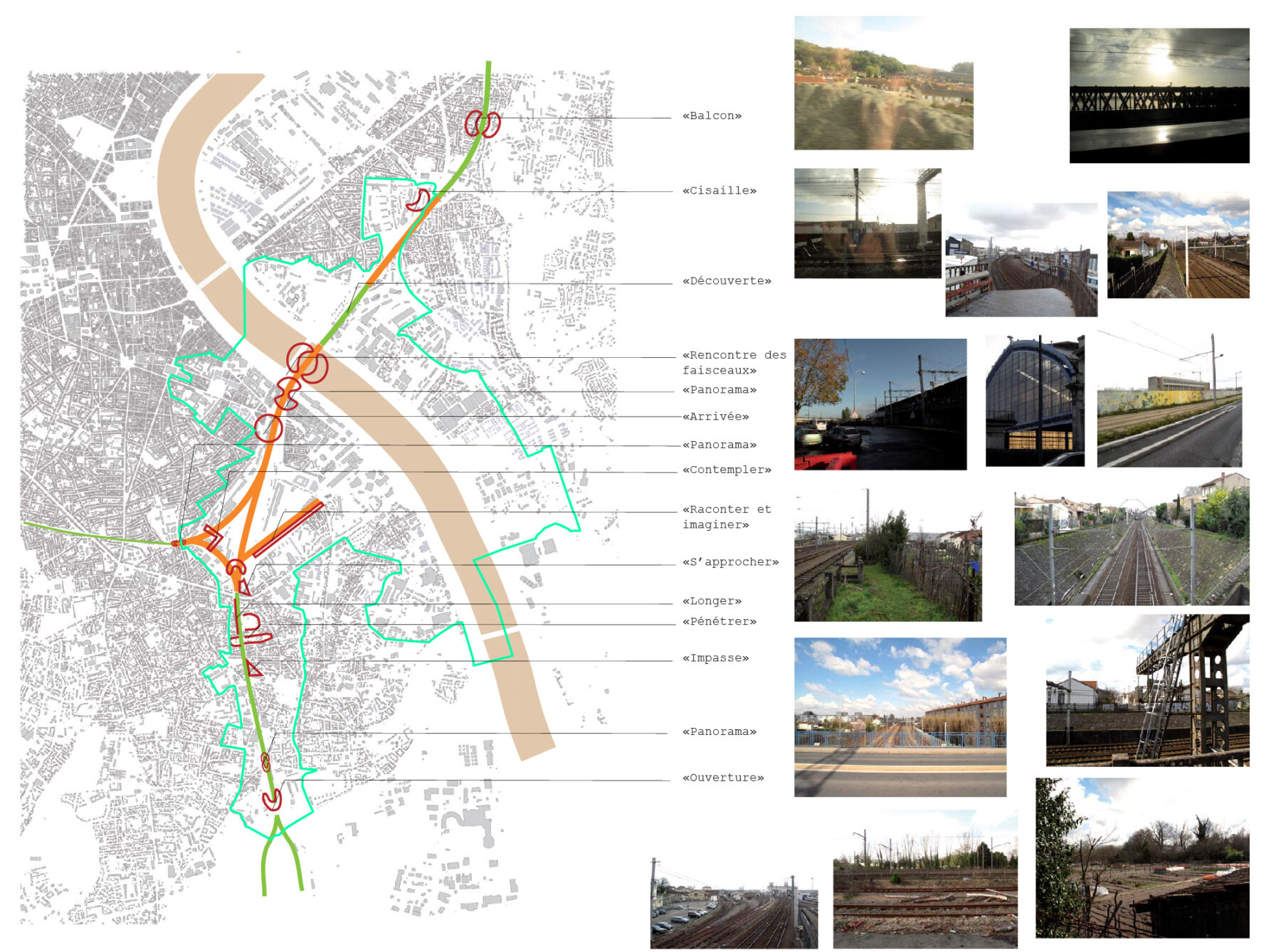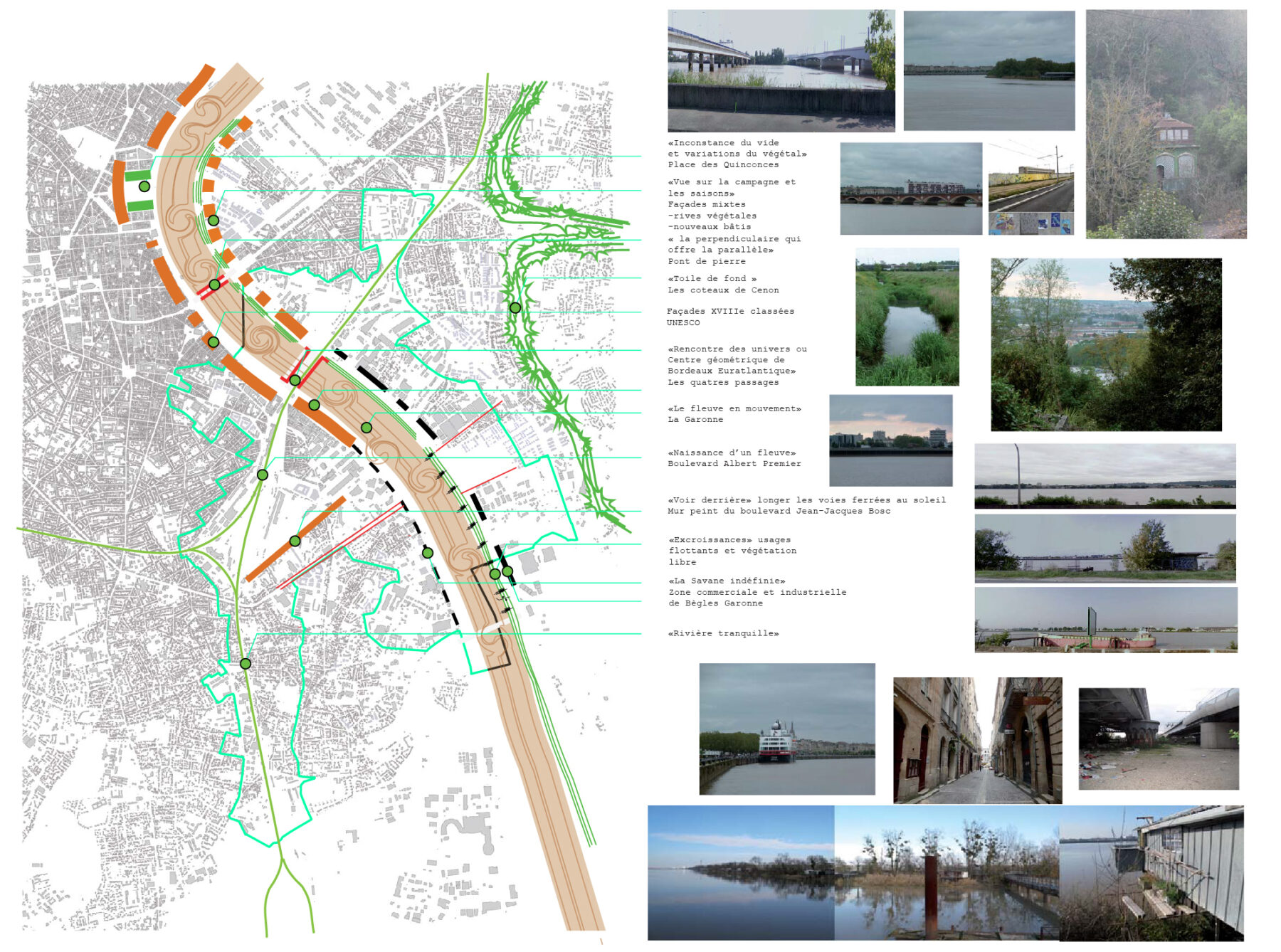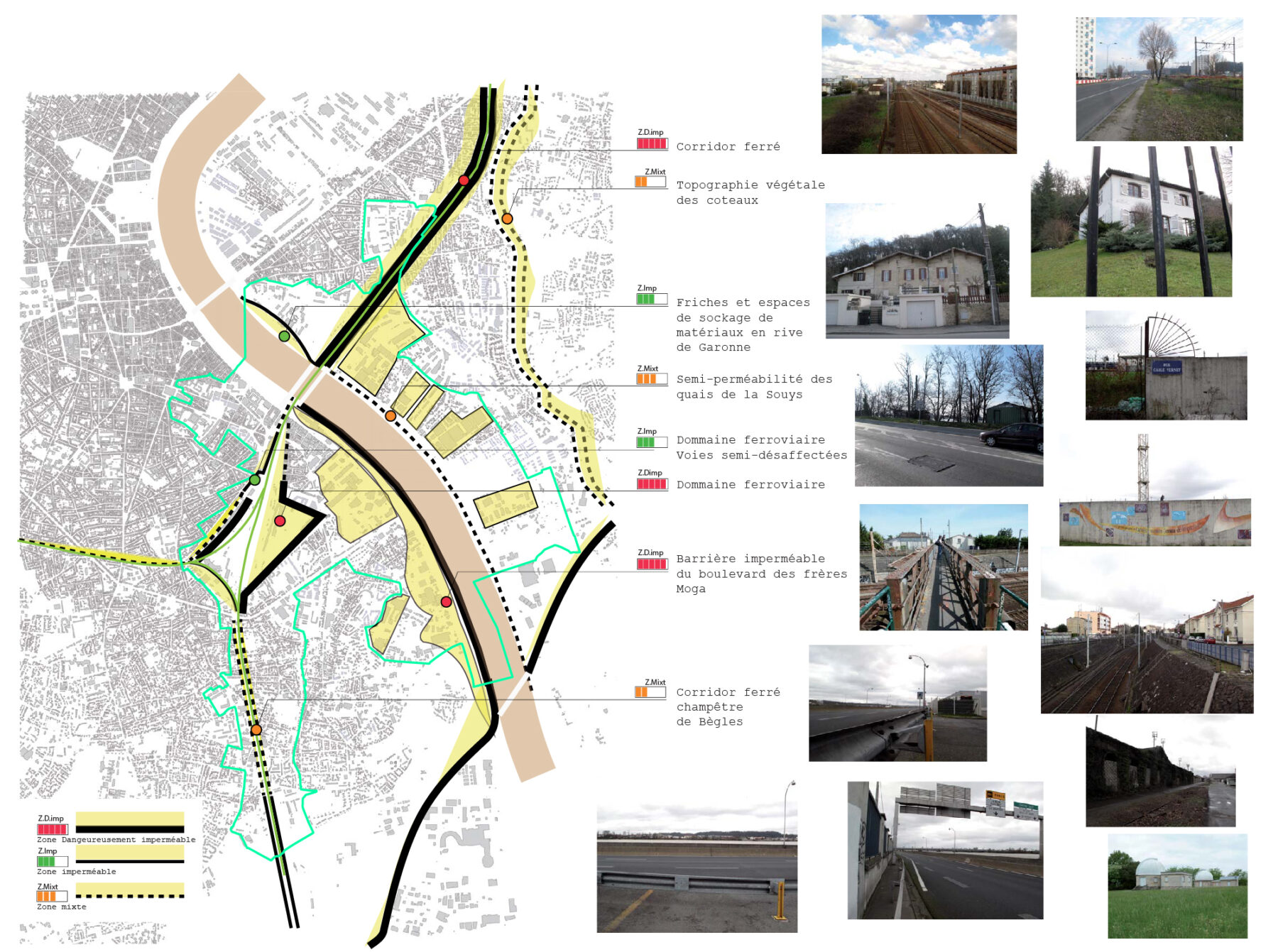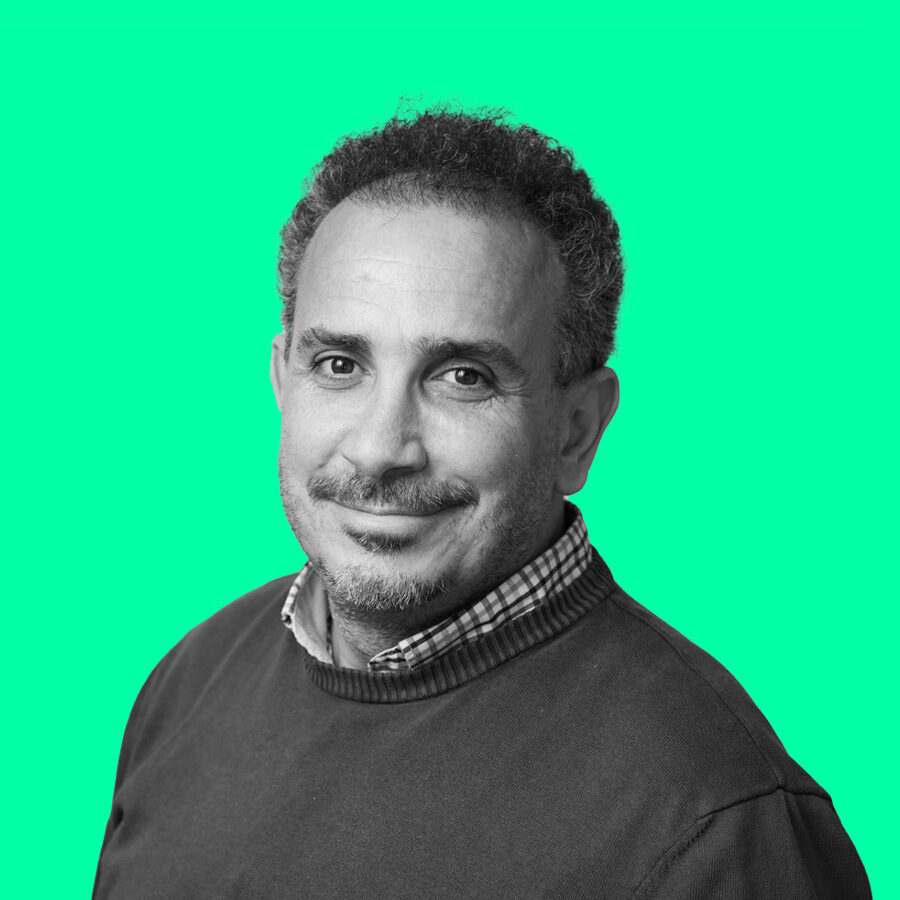Bordeaux Euratlantique
Bordeaux
2014
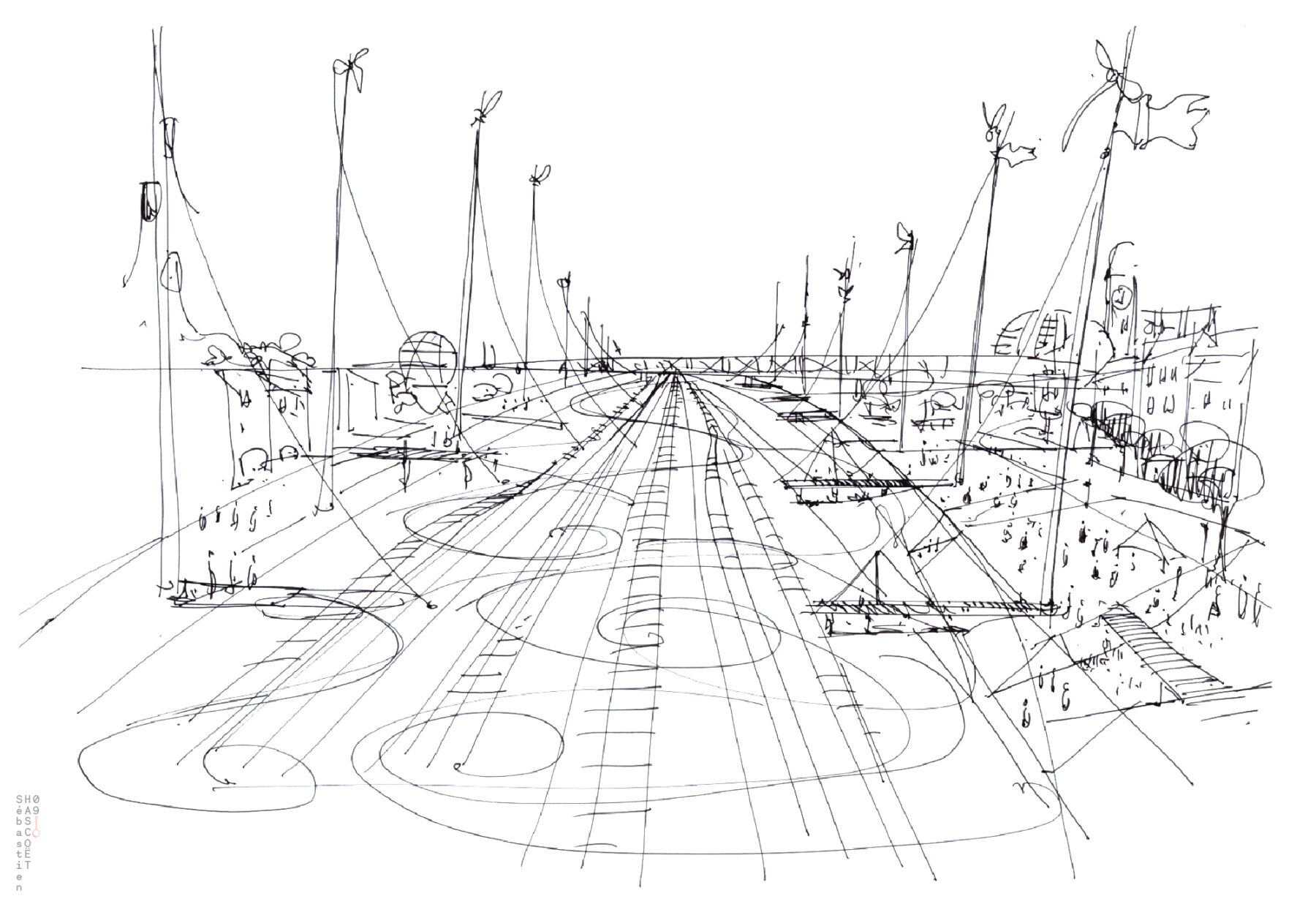
In 2009, Atelier Frank Boutté got involved in the Bordeaux Euratlantique development just as Philippe Courtois was appointed head of the exploratory mission for this major project of national interest (opération d'intérêt national or OIN) with responsibility for setting out the sustainability strategy for one of France’s largest construction programs to date (over 730 ha). Bringing a wealth of experience in building programming and significant experience in urban development, to say nothing of leading dialog with and persuading project owners who are not always committed to the environmental cause, Atelier Frank Boutté said that it would not repeat the mistake of spending time (at the behest of the Ivry developer) carrying out a complete diagnosis without first formulating a strategic vision and calculating the working figures.
Our team therefore embarked on an in-depth analysis and renewal assessment of the area and its neighborhoods, and set out the fundamental principles of the approach: immerse ourselves in the area and become Bordelais; understand the city’s identity and culture; never lose sight of the bigger picture (and common sense!); turn problems into opportunities—and there were plenty to consider: pollution, flooding, noise nuisance from road and rail infrastructure, air quality; approach the area holistically and develop a systemic approach to defining the associated challenges-solutions; seek the best balances (the hallmark of a systemic approach), integrate sustainability into the project’s DNA (urban form, definition of public spaces, building morphology, architecture, programs, and uses). Once the exploration mission was completed, the OIN was established, and a new consultation process launched.
Our first job was to draw up a sustainable development charter.
This consisted of creating a hybrid tool: an operational charter for the sustainable development dimension combined with a manifesto to adopt the philosophy and shared values following the diagnosis.
Once the charter was drawn up and signed by all stakeholders, it formed the basis of a set of environmental and sustainable development obligations/specifications. Three types of obligation/specification were recommended: invariable (the baseline); variable (the negotiated part); and one or more subjects for experimentation/research, on which the operator pledged to innovate and achieve progress for the construction industry as a whole. These subjects for experimentation were prompted by “sustainability figures”. This is how our studio came up with the idea of combatting the morphological and architectural uniformization in force in the region. Building a city by assembling individual programs (under supervision!) and contrasting identities, providing a space for pioneers to emerge, was the direction to go in. We also recommended an equalization program for Bordeaux to convert the financial input avoided by the over-optimization of building energy use into architectural, technical, usage, or other value. This region/buildings equalization mechanism would be adopted later in the RT2012 with the increase in target consumption levels based on the carbon content of the energy networks!
Mission
Project management assistance to the EPA during the exploratory mission and then of the Bordeaux Euratlantique Project of National Interest (<i>Opération d'intérêt national Bordeaux Euratlantique</i>)
Team
Biotope, Ville ouverte, and Frédéric Gilli
Schedule
2009–2014
AFB Team
Mohamed Benzerzour
AFB alumni: Julia Angeletti, Maëva Balay, Alexandre Bastien, Mathieu Cros, François-Xavier Parent, and Fanny Perineau
